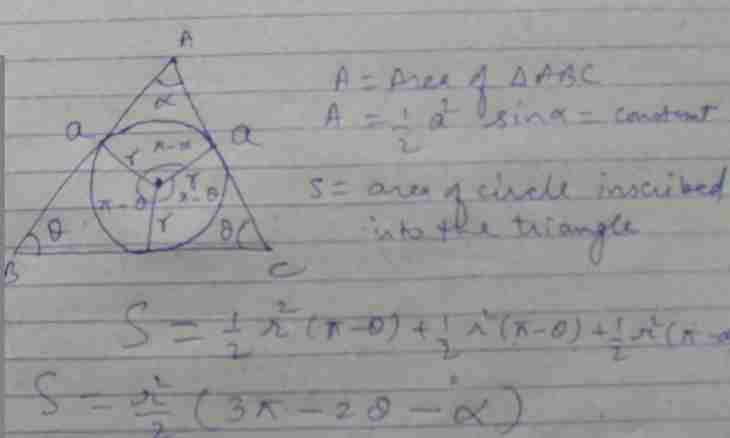The flat and closed geometrical figure made of four in pairs parallel pieces is called a rectangle if all corners are equal in its tops 90 °. Such simple figure has not much parameters which it is possible either to measure, or to calculate mathematically. One of them - the area of the plane limited to the parties of a quadrangle. It is possible to calculate this size in several ways, and the choice of the most convenient has to depend on initial statements of the problem.
Instruction
1. The easiest way it is possible to calculate the area of a rectangle (S) in case initial conditions give information on length (H) and width (W) of a figure. At such set of parameters just multiply them: S=W*H.
2. Calculation of the area (S) of this figure will be a little more difficult if length of only one of its parties (W) and also any of diagonals (D) is known. By definition both diagonals of a rectangle are equal therefore for calculation of the area consider the triangle made by the party of the known length and diagonal. It is a rectangular triangle in which diagonal is a hypotenuse, and the party - a leg. Use Pythagorean theorem to calculate length of the missing party and to reduce a formula to described in the first step. From the theorem follows that length of an unknown leg has to be equal to a square root from the difference between the squared lengths of diagonal and the known party. Substitute this value in a formula from the first step instead of length of a rectangle and you receive S=W formula * √ (D²-W²).
3. More difficult case - calculation of the area of the rectangle set by coordinates of the tops in two-dimensional space. The solution of a task can be consolidated to a formula from the first step - for this purpose you will need to calculate lengths of two adjacent parties of a figure. This size for each of them can be calculated, having considered the triangles formed by the party and its projections to abscissa axes and ordinates. Each of these triangles will be rectangular, the party will be its hypotenuse, and both projections - legs. Using the same Pythagorean theorem calculate required size for both parties.
4. Let's say that two parties of a rectangle having one general point (i.e. its length and width) are set by coordinates of three points of A (X ₁, Y ₁), B (X ₂, Y ₂) and C (X ₃, Y ₃). The fourth point can be not considered - its coordinates do not influence the area of a figure in any way. Length of a projection of the party of AB to abscissa axis will be equal to the difference of the corresponding coordinates of these points (X -X ₁). Similarly also length of a projection to ordinate axis is defined: Y -Y ₁. Length of the party means, according to Pythagorean theorem, it can be found how a square root from the sum of squares of these sizes: √ ((X -X ₁)²+ (Y -Y ₁)²). Make the same formula and for the party of BC: √ ((X -X ₂)²+ (Y -Y ₂)²). Substitute the received expressions for width and height of a rectangle in a formula from the first step: S = √ ((X -X ₁)²+ (Y -Y ₁)²) * √ ((X -X ₂)²+ (Y -Y ₂)²).

